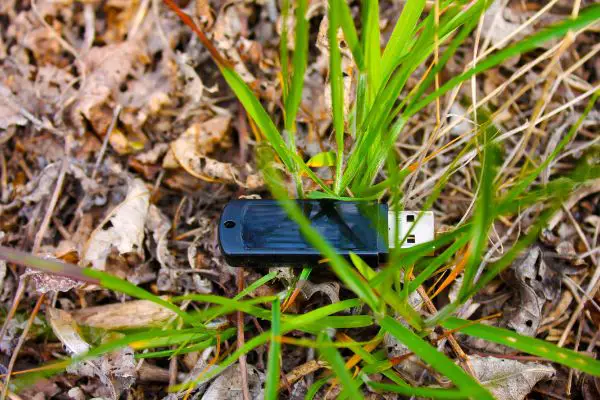Disclaimer: This post may contain affiliate links, meaning we get a small commission if you make a purchase through our links, at no cost to you. For more information, please visit our Disclaimer Page.
Universal Serial Bus (USB) drives are one of the most convenient accessories for modern devices. Initially created for computers, some ports, like tablets and phones, will accept specific standards.
Convenience plays a significant role in the shift toward USB-based connectors for different devices and their accessories. Now, many people use it as a way to move data from one device to another quickly.
Although we might commonly associate USB drives with data storage, it has other uses. For example, they can store bootable files we can execute on any device. They also offer special keys to decrypt files or programs. And they hold whole apps that run from the disk without needing to install more programs on a computer. With all their capabilities, it is fair to ask if they are waterproof.
Table of Contents
Are USB Drives Waterproof?
No, USB drives are not waterproof, but many people think otherwise. However, they are still highly resistant to any damage that is a direct result of water. To better understand, we will discuss what manufacturers mean when they say their USB device is waterproof.
USB drives that have waterproof capabilities are disk-in-package types. You will see this type listed by its acronym, UDP. These are thinner and smaller than the regular USB. In addition, they integrate product-in-package (PIP) production technology, making it much better than its predecessors. In other words, they are faster and more resistant to damage.
Aside from those that might crush the hard outer shell, most physical impacts won’t damage the components or data inside. However, while they have some resistance to water and its damage, it does not mean they have complete proof against water.
Like most storage drives, USBs are not completely sealed. It needs an opening to connect to any device that might use its contents. However, most quality USB devices still sport a high resistance to excess moisture.
Can a USB Drive Take Water Damage?
Technically, a USB drive can withstand water damage. However, it depends on several factors:
- What happens when the drive gets wet
- What you do with it
- How do you care for it after it takes on some water
You may run into problems if you try to use the drive too soon after getting wet. There might be some moisture inside you haven’t noticed.
Note that there’s a difference between a USB stick’s exposure to water and damage from water. Simple water exposure does not harm any of its internal components. Its outer shell is tough enough to protect the sensitive internal components that hold the stick’s data.
Water damage might happen if you allow any excess moisture to stay inside the USB drive for an extended time. If water damages the drive’s components, it cannot read or save data properly. In extreme cases, the USB becomes useless. But, again, such damage won’t happen to any unplugged USB with short water exposure.
Will a USB Stick Work After Getting Wet?
Yes. A USB drive could still work after getting wet. It is partly due to the makeup and design of the device itself, something we’ve covered in an earlier section.
Another factor is how water interacts with electronics. Although water and electronic devices do not mix well, excess moisture does not cause damage per se. Instead, the USB was active when it came into contact with the liquid.
Similarly, users should never power on wet devices. Doing so can short-circuit the USB, overloading the different components and causing them to fail.
Therefore, most USB sticks should still work adequately after getting wet. However, they must be fully dry before plugging them into another device. Excess moisture will damage the USB and the device it is plugged into.
Can USB Drives Survive a Washing Machine?
A USB drive can survive a cycle in a typical washing machine. However, if you left it in the washing machine, don’t plug it in immediately. Don’t do it even if the drive looks dry to you.
Furthermore, there’s no guarantee against data loss. Although a USB will withstand water exposure, there is always a chance that moisture, detergent, and other substances could affect the disk.
However, if you act quickly and thoroughly, there is still a good chance you can save the data on the drive. First, let the unit dry out completely. Don’t shortcut the process, even if you think it is dry. Allowing it to dry much longer won’t hurt.
It would help if you took some measures to get the excess moisture out of the disk as soon as possible. The longer water stays on any of the metal parts of the flash disk, the greater the chances of corrosion. If some of the metal gets corroded, the entire drive gets damaged. Furthermore, the chances of restoring the disk become slimmer.
It is also most likely that the life of the flash drive will become shorter. It does not mean you cannot recover any data or use the drive, but you should back up your data as soon as it dries out. Then, transfer your data to a new flash drive or another storage device.
Don’t wait for it to happen before you back up your data. Instead, create regular backups that don’t rely on the flash drive’s memory.
How Do You Dry Out a USB Stick?
There are a couple of ways to make sure the stick dries out. First, put the drive in a bowl of rice or a bag with silica packets for at least a day.
You could also air dry the USB with its port and connectors facing down to evaporate the moisture. Never use any heat on the flash memory chip. Doing so will melt any tiny parts inside the drive, and any excess heat could warp these parts, making the USB useless.
Conclusion
Although USB sticks are not waterproof in the absolute sense, they are highly resistant to moisture. In most cases, only full submersion into water should pose any risk to them. Even here, the risk is higher when users plug it in immediately while it’s wet.
Wait for your USB to dry out completely. You will preserve both the drive and the data inside it. Once it dries thoroughly, back up its data so you may be able to continue using it. Feel free to refer to our troubleshooting tips above to get more help with the significant steps in this process.


